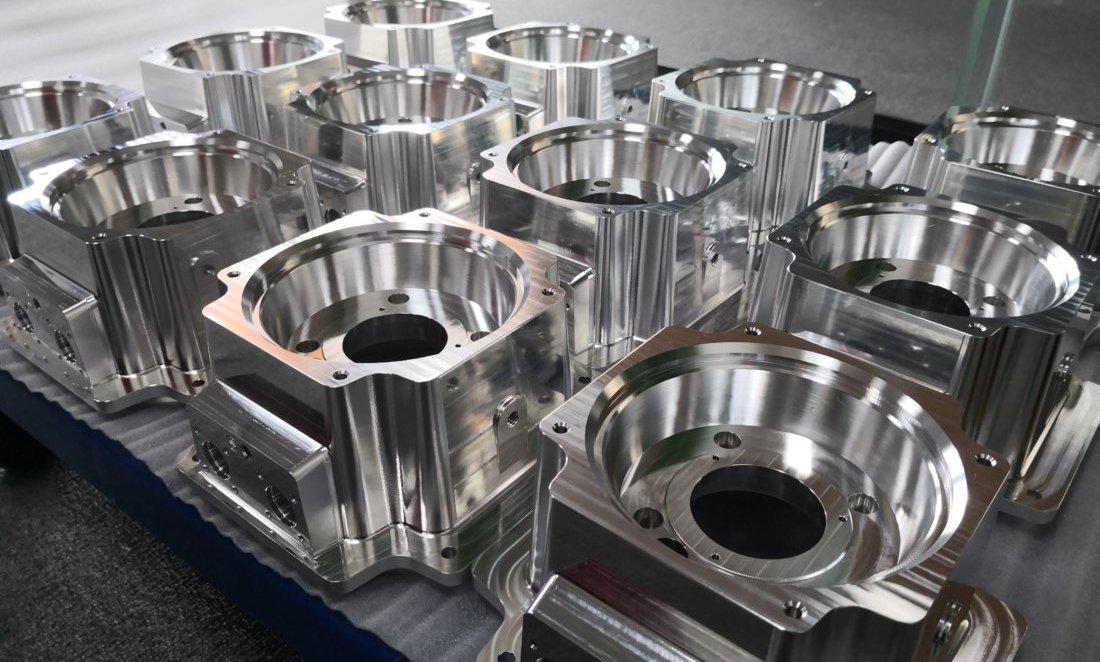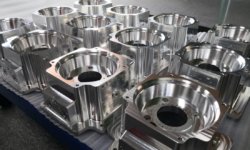Today’s economy is defined by impulse. The ease of online shopping makes life simple — perhaps too simple — for consumers to order products as soon as they want them.
Personalized ads are targeted at these potential consumers to encourage spending, and orders can be completed with just a few clicks. In many countries, packages can arrive at the buyer’s home or workplace the next morning.
But the ease of online shopping can lead to overspending, where people accumulate large quantities of products, inspired by special discounts and rewards programs. People often don’t need the things they are buying, but buy them anyway out of sheer convenience — or to have a wide selection of items available to them at any one time.
These consumer habits are reflected in the business world in traditional manufacturing practices. An excess of products are manufactured, and in many cases, an excess of products are bought. In the end, nobody really wins.
Traditional manufacturing
For companies in the business of consumer goods, clothing, electronics and other products, the traditional approach to manufacturing is to create a lot of stock. Economy can be found in large-scale manufacturing, so the established approach is to acquire a large amount of stock then aggressively try to market products to consumers.
Sometimes this works, and a product ends up in the hands of millions of consumers. But when it doesn’t, the business has to sell its product for its face value without making a profit — or worse, simply throw it away for scrap.
It’s easy to see why this is a high-risk strategy for businesses. If you make thousands or millions of units of a product without knowing consumers will buy it, there’s a good chance you’ll lose your money. That’s why some companies end up shutting down when their products are a massive commercial failure.
And badly run businesses aren’t the only losers in this situation. When a company employs a factory to create millions of unsuccessful products — think Google Glass, the Sega Dreamcast or bootcut jeans — it causes a huge amount of material wastage and carbon emissions, ultimately harming the natural environment for no good reason.
It’s up to CEOs to judge whether traditional mass manufacturing is worth the financial risk. But taking into account climate change, it may be simply unethical.
An example of when traditional manufacturing goes wrong
A modern example of overproduction came directly from the Covid-19 pandemic. Back in March–April 2020, there was a global shortage of protective equipment, which inspired many businesses to build or purchase end-to-end mask making machines that can produce large quantities of single-use face masks with little downtime.
But with so many businesses rushing to obtain a mask machine at once, there quickly became an abundance of supply and a lack of demand. And with many civilians now favoring reusable cotton masks over disposable ones, many of these mask production machines are sitting dormant.
What is custom manufacturing and its state today?
Custom manufacturing represents a different approach to traditional manufacturing. It involves companies reacting to genuine demand instead of artificially creating demand to offload large quantities of stock.
The principle of custom or on-demand manufacturing involves manufacturing products in small quantities only as required, taking advantage of short lead times and rapid manufacturing techniques to fabricate items when orders are placed for them. Products can be customized for specific customers to meet their required specifications.
This means there may be less production overall, but guarantees that every manufactured unit has a willing buyer, eliminating material and financial wastage.
So how does it work?
In most cases, custom manufacturing is dependent on digital design and manufacturing technology. By fabricating items with digital production technologies like CNC machining or, to a lesser extent, 3D printing, manufacturers can rapidly iterate their products as and when required.
These manufacturing technologies have short lead times because digital designs can be sent to the manufacturing equipment without extensive preparation or tooling.
What are the benefits of custom manufacturing?
And this speed of manufacturing gives businesses an advantage in terms of eliminating risk.
If products only need to be manufactured after demand is established — in the form of orders, quotations or promising leads — then businesses won’t end up manufacturing huge quantities of products nobody wants.
This in turn means the companies don’t need to aggressively market their speculative new products, a practice which itself can severely deplete a company’s budget.
It’s easy to see why companies would want to adopt custom manufacturing practices.
Money can be saved by avoiding wastage and extensive marketing, and management can avoid the risk of running their business into the ground by developing an unwanted product.
Of course, there are drawbacks to this approach. Traditional manufacturing — although it comes with risks — guarantees that products are ready to be shipped immediately, since they have been manufactured in advance, and this may give businesses a competitive edge.
And it isn’t always possible to drum up demand for a product before it actually exists: if a business has developed a completely novel product, it will need to deliver the product to the market before competitors manufacture their own alternatives.
Furthermore, many simple products — food packaging, standard fixtures and fittings, etc. — will always have demand and do not require customization.
The future of custom manufacturing
The future of manufacturing will not be homogenous. Different companies and products require different approaches to manufacturing, and it is important to identify the best manufacturing strategy for a given line of products.
That being said, new technologies will make it easier to improve traditional and custom manufacturing, and to combine the two to better effect.
Big data will play an increasingly important role. At present, custom manufacturing is advantageous because ordering on demand guarantees a sale. However, since buyers must have an existing interest in the product, it does not easily enable companies to get “ahead of the curve” and shape market trends.
By using cloud data and AI technologies, it will become easier to analyze market demand and manufacture the right products at the right time. This is different to traditional manufacturing, since it will be partially reactive, but it will also enable companies to manufacture in larger quantities, taking advantage of economy of scale.
The result will be manufacturing that is tailored to unique and contemporary demands, but which can be increased in scale to more effectively penetrate markets.
There is almost a paradox here. The evolution of rapid manufacturing technologies like CNC machining and additive manufacturing will allow companies to fabricate more products on demand, taking advantage of local manufacturing hubs and printer farms to drastically reduce lead times. But at the same time, improved data analysis will give businesses more confidence in predicting market trends, allowing them to manufacture stock with minimized risk.
Bottom Line
Whatever happens, the future of manufacturing should result in less wastage, which is good news for companies and the planet.
At 3ERP, our main business is rapid prototyping and low volume manufacturing which includes additive manufacturing, custom CNC machined parts, custom injection molding services and other custom manufacturing processes. We are proud of being the good side for our environment.







